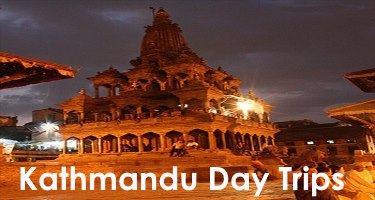Nepal Trek Info
Nepal Trekking
You don’t need to possess an exceptional physique or any great strength to enjoy trekking in Nepal. If you are in good health, physically fit and have a taste for outdoor life, you can join most of our treks. Some treks, however, are quite rigorous and involve climbing at high altitudes. Difficulties may be encountered on these treks because of the thin air at such elevations and the strenuous exertions required. It will be good if you try to find out as much as possible about Nepal’s customs especially about the particular trek that you have planned before arriving. It is always our pleasure to provide you information with updated facts.
Types of Trekking
Lodge Trek
The most popular way to trek is to use local trekking lodges for accommodation and meals. There are good lodges every few hours on treks in the Annapurna, Langtang, and Khumbu (Everest) regions. Lodges in the hills provide a special meeting place for trekkers from around the world. You will have a good opportunity to see how people in the hills of Nepal live, work and eat and may develop at least a rudimentary knowledge of the Nepali language. Porters carry your gear, and a guide travels with the group during the day and handles all the arrangements for meals and dealing with bureaucracy. It’s hassle-free trekking with just a light daypack!
Camping Trek
The classic style of a trek in Nepal is to camp in tents and employ porters to carry your gear and sherpas to set up camp, cook and serve meals. You carry a pack with only water, camera and jacket. If you are used to carrying your own gear in a backpack, you’ll be amazed at the apparent luxury of a trekking camp in Nepal. Although you’ll be sleeping on foam mattresses placed on the ground, you’ll be assigned a roomy A-frame or dome tent that comfortably accommodates two people and their gear. Meals are served family style at a table as you sit in a chair in a dining tent or outside enjoying the view. The camp staff have their own tents and kitchen facilities and kitchen-boys race back and forth to the dining tent acting as waiters. If If there is no permanent toilet the staff dig a hole and set up a toilet tent.
Camping-groups are fully independent of local accommodation and food. A fully organized trekking team is quite a large outfit as not only the trekker’s personal gear needs to be carried but also the group equipment and food. It is likely that there will be three local staff to every trekker. There are many advantages to choosing a camping trek: the control of hygiene in the kitchen is a lot easier on camping treks than in lodges; there is reduced exposure to upper-respiratory ailments (like the infamous ‘Khumbu Cough’) compared to inside trekker-filled tea-houses; tent camping gives you the freedom to go to bed when you choose and you usually get to have a quiet night, away from the uproar of a lodge; because there are also tents for the sherpas and porters, you do not need to camp near villages and can trek comfortably in remote regions; you provide much-needed employment for many local porters. A group camping trek follows a tradition and a routine that trekkers and mountaineers have developed and refined for more than 50 years.
Nepal Trekking Season
Autumn ( September – November)
This season is considered the best time for trekking in Nepal, which offers excellent weather and tantalizing mountain views. Temperatures are moderate, making it a good time for anyone of our trekking, tours. The skies are generally clear with outstanding views. Occasional short storms may dump snow at high altitudes.
Winter (December – February)
This season is noted for occasional snowfall only at higher elevations. Hence it is ideal for trekking at a lower elevation, generally below 3500 meters.
Spring (March-May )
This is one of the other best times for any trekking in Nepal, offering different varieties of wildflowers, especially the rhododendrons making the hillside above 3000 meters a haunting paradise during this Spring. It is mildly warm at lower elevations and at the higher elevation, over 4000m, the Mountain Views are excellent while the temperature is quite moderate.
Summer/ Monsoon (June – August)
Summer months continue up to mid-September making travel wet and warm. These times are a blessing for the keen botanist or photographer as the higher valleys and meadows blossom with flowers and lush vegetation making this the perfect time to capture Nepal in all its beauty. It’s recommended to carry insect repellent when trekking during these summer months. Trekking in rain shadow parts are options for this time of year.
Nepal Trekking Grade
Easy: Easy Trek does not require any experience of mountaineering and rock climbing as it begins with an elevation below 3500m. One can make a little walk about 3 to 4 hours per day on an occasional steep path or no walking is required. So, the trekkers without good physical condition can easily trip in this type of trek. Mostly, it is the suitable trekking for the couples with a young child along with the aged people.
Moderate: Moderate trek is quite longer and harder in comparison to easy trek as these treks include 4 to 6 hours walking each day. The trek is even called low altitude trek with an elevation of 4500m. The trek recommends the trekkers with basic physical fitness but it does not require any experience and it is suitable for all walkers. Because of this fact, even the aged people are fit for this trek.
Moderate to Challenging: Moderate to Challenging should be undertaken by those who have previous experience in hiking It engrosses with an elevation between 4500m to 5500m and need 12 to 14 days of 7 to 8 hours of walking on foot per day through the wild country with high passes. For anything of this level of a trek, you need to have strong physical fitness which is very important factors for the trip. The trek is significantly towards higher altitudes and remote area.
Strenuous: It is really the most difficult and challenging type of trekking which provides the real adventure of mountain climbing to any trekker. This type of trek includes rarely visited area, more than 8 to 9 hours walking per day. So, the well-trained trekkers with strong physical appropriateness are highly required.




